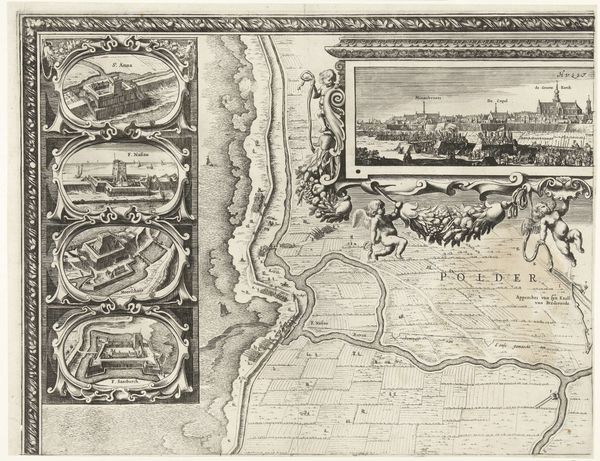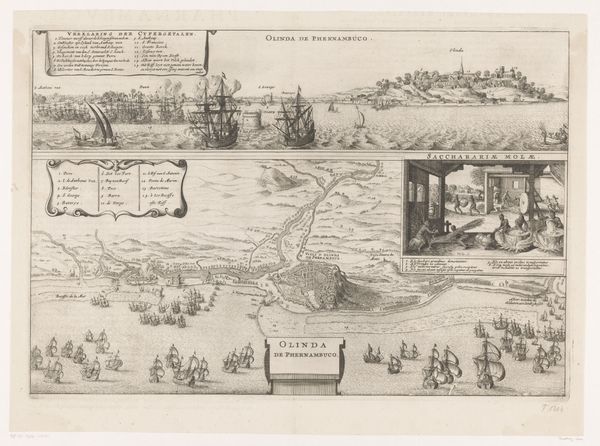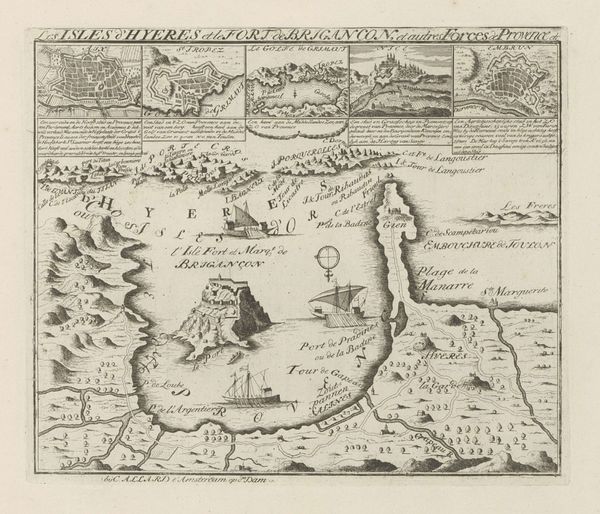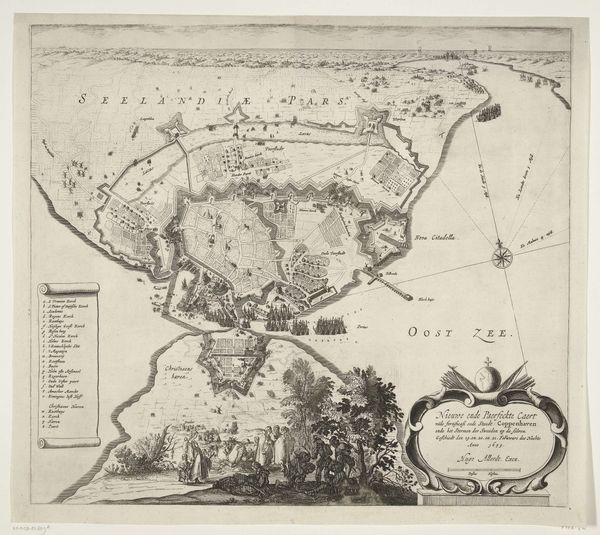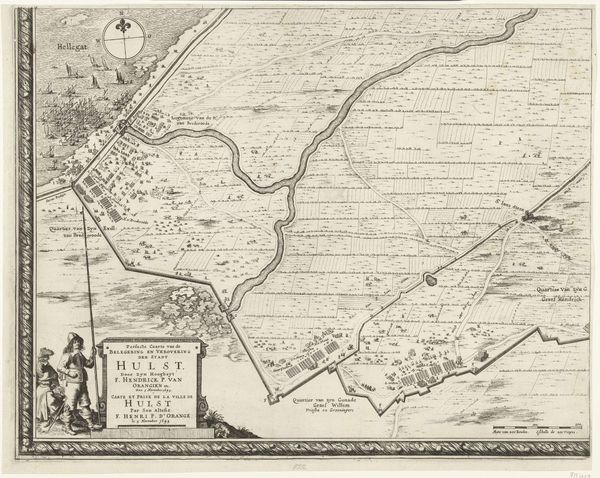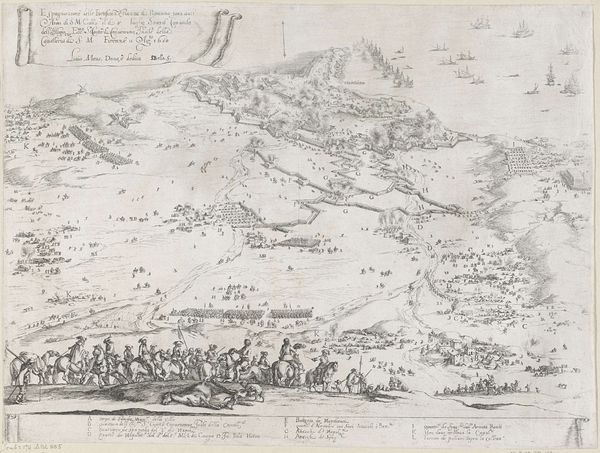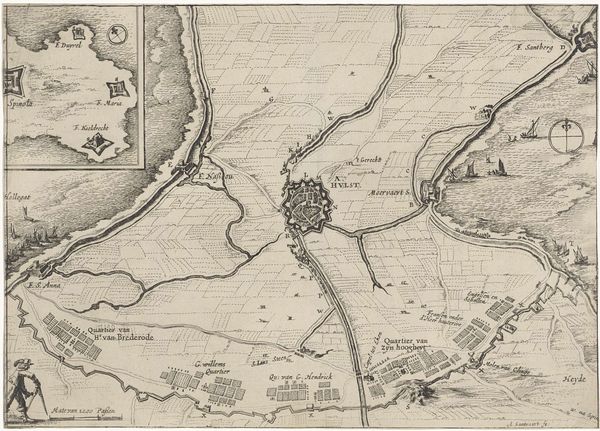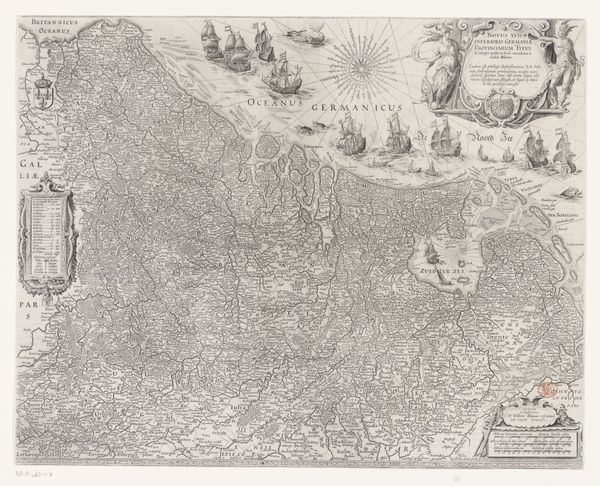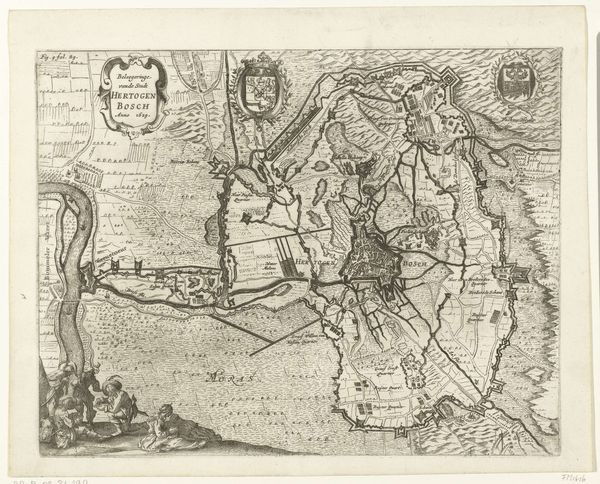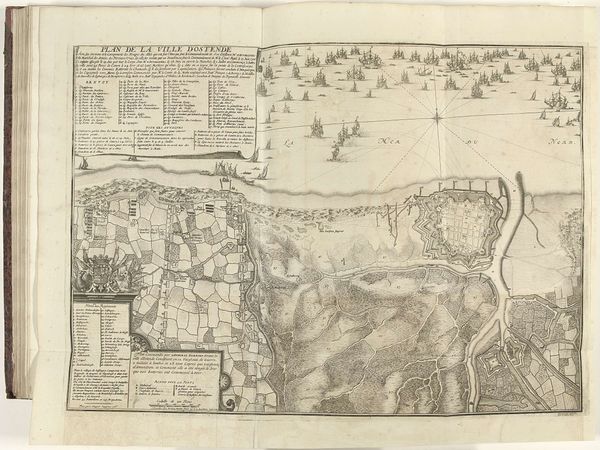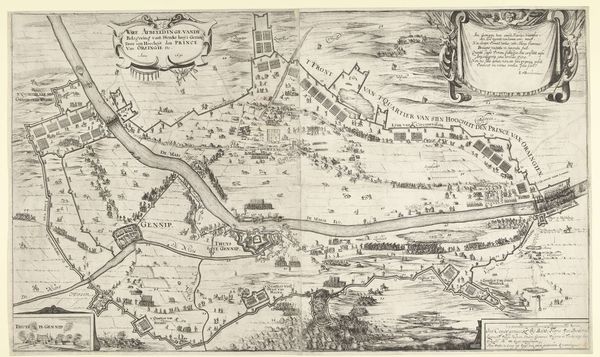
Beleg en verovering van Hulst door Frederik Hendrik (blad rechtsboven), 1645 1646
0:00
0:00
abrahamdirckszsantvoort
Rijksmuseum
print, engraving
#
dutch-golden-age
# print
#
cityscape
#
history-painting
#
engraving
Dimensions: height 416 mm, width 541 mm
Copyright: Rijks Museum: Open Domain
Curator: This engraving from 1646 by Abraham Dircksz. Santvoort, entitled "Siege and conquest of Hulst by Frederik Hendrik", part of the Rijksmuseum collection, presents a fascinating visual document. Editor: It does! My immediate impression is one of meticulous detail. The rendering of space is quite compelling—a very dense landscape filled with minuscule details, somehow still giving the feeling of depth. Curator: Indeed. It offers a bird's-eye view of the siege, but also situates it within a larger geopolitical framework, highlighting territorial claims and strategic waterways of the Dutch Golden Age. Editor: Speaking of strategic, observe how Santvoort organizes visual information. The sharp lines demarcating land and water, the almost calligraphic rendering of vegetation… it’s both descriptive and powerfully graphic. What could that represent? Curator: It’s also meant to be celebratory! It commemorates Frederik Hendrik's victory, strengthening the Dutch Republic's control over a vital territory in Zeeland. These images legitimized power and communicated complex political narratives to a wider audience. Editor: I see how it's about representation as much as record. Note how all the ships are parallel, and the way each section of landscape has been treated the same in this rendering. Santvoort's deliberate choices really structure how the whole scene is perceived. Curator: Absolutely. Consider how printmaking facilitated the dissemination of these narratives beyond elite circles. People all over the Republic could learn of, and potentially see for themselves, this conquest and reflect on its implications for the developing nation. Editor: Seeing the formal clarity and considering its reach really shapes my understanding. Initially, it felt purely documentary, but realizing the potential political motivations adds complexity. Curator: Right, and understanding these intentions helps us better understand the role that art and media play in shaping historical consciousness. Editor: Precisely. Analyzing its visual structure gave me some appreciation for its role in contemporary political communication. It’s quite a remarkable artifact when you think of it that way.
Comments
No comments
Be the first to comment and join the conversation on the ultimate creative platform.
